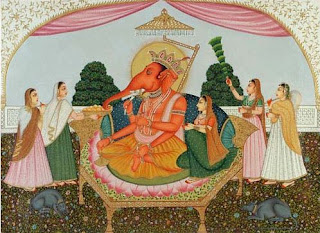The below photograph is of the part of the Thiruvoodal Festival known as the Maruvoodal . . . which marks the reunion of the Divine couple in their abode at Arunachaleswarar Temple.
When Lord Shiva completes his pradakshina he returns to Arunachaleswarar Temple early the next morning. He wishes to have reunion with his consort. This part of the Festival is known as Maruvoodal. The point of the Maruvoodal myth is to show the world that even a Celestial Couple has differences between them. But in the end there should only be reunion, even at the cost of a loss in finances which is represented by the loss of the jewels the night previously.
Returning to his residence, Shiva knocks at the door but it has been bolted by Parvati. Lord Shiva asks,
‘Oh my darling why have you locked the door?’
‘Sir after we came to an understanding still you went without me. And see now look you have lost everything there is no ornament or clothes. Not, only that but you went and gave darshan to all kinds of people. So, I am now requesting you must establish your manliness to me and retrieve everything that is lost and give the special one-legged dance.’
Shiva starts the dance, Parvati forgets everything and opens the door. Their reunion is complete.





















